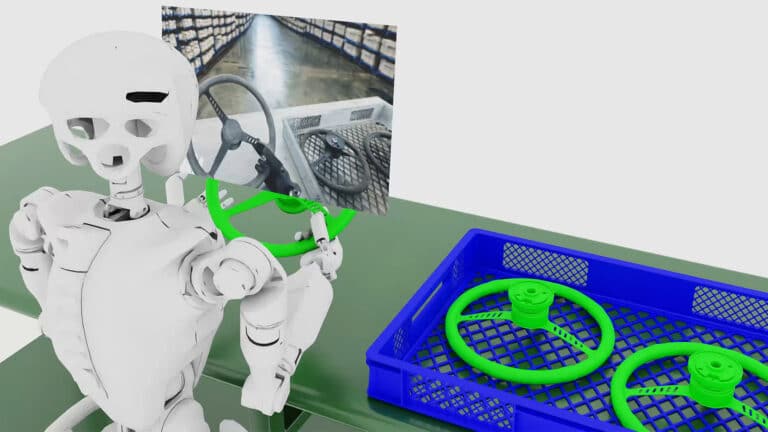NVIDIA has introduced Cosmos™—an advanced platform integrating state-of-the-art world foundation models (WFMs), sophisticated tokenizers, comprehensive guardrails, and an enhanced video processing pipeline optimized for NVIDIA’s Data Center GPUs. This technology aims to propel innovations in physical AI systems, including robotics research, engineering, and autonomous vehicles (AVs).
A New Paradigm in Physical AI Development
Creating robust AI models for physical systems demands immense computational power and extensive real-world data. NVIDIA Cosmos addresses these challenges by enabling developers to generate vast amounts of synthetic, physics-based data, crucial for model training and testing for different artificial intelligence stages. Developers can fine-tune these WFMs or design custom models tailored to specific needs.
The initial wave of these open models is available through NVIDIA’s API catalog and the NGC™ catalog or via Hugging Face, allowing seamless integration into development pipelines.
Leading enterprises across the robotics and automotive sectors, including Agile Robots, Figure AI, Waabi, XPENG, and Uber, are among the early adopters leveraging Cosmos’ capabilities.
Jensen Huang, NVIDIA’s CEO, remarked, “The ChatGPT moment for robotics is coming. Like large language models, world foundation models are fundamental to advancing robot and AV development, yet not all developers have the expertise and resources to train their own.”
Customization and Data Generation
NVIDIA Cosmos WFMs empower developers to adapt models by incorporating diverse data sources, such as AV trip recordings or warehouse navigation scenarios, to meet specific application requirements.
Specific AI benchmarks in the fields of robot research and engineering are yet to be seen, but NVIDIA expects their new platform will lead to top-performance results. These models excel at generating physics-based video simulations, handling inputs like:
- Text, images, and video data
- Sensor data from robotics systems
- Environmental factors in industrial or driving conditions
Cosmos supports the creation of accurate simulations for evaluating AI performance, generating controlled 3D scenarios using NVIDIA Omniverse™, and conducting comprehensive multiverse simulations to assess potential outcomes.
Technological Innovations in Cosmos
- Data Processing Efficiency: Leveraging CUDA® acceleration and NVIDIA NeMo™ Curator, Cosmos can process 20 million hours of video in just 14 days—a task that would typically require over three years with CPU-based processing.
- Advanced Tokenization: The Cosmos Tokenizer transforms visual data into efficient tokens, offering up to 8x greater compression and 12x faster processing compared to other solutions.
- Seamless Customization: The platform integrates the NeMo framework for optimized model training and refinement, enabling developers to create sophisticated AI solutions efficiently.
Impact on Robotics Market and Industry Trends
NVIDIA Cosmos platform addresses the data scarcity and variability challenges faced by robot researchers and AV developers. By reducing reliance on costly real-world data capture, Cosmos accelerates AI development timelines and improves training efficiency. This democratization is vital as market demand for autonomous systems continues to surge.
The increasing adoption of AI in sectors like transportation, manufacturing, and logistics underscores the importance of platforms like Cosmos. Companies such as Uber and XPENG are leveraging its capabilities to expedite the development of scalable autonomous driving technologies.
Aligned with NVIDIA’s principles for trustworthy AI, Cosmos integrates measures to ensure privacy, safety, and transparency. Features include:
- Guardrails to mitigate harmful outputs
- Tools to enhance prompt accuracy
- Invisible watermarks on AI-generated content to prevent misinformation
Developers are encouraged to adopt best practices for ethical AI development, contributing to a safe and responsible technological ecosystem.
Looking ahead, the emergence of platforms like NVIDIA Cosmos will lead to a greater reliance on synthetic data and simulation environments in AI research. This trend enables faster iteration cycles, more accurate models, and reduced development costs. The implications are vast, with potential applications including:
- Autonomous driving systems capable of real-time adaptation to complex traffic scenarios
- General-purpose robotics capable of seamless interaction in dynamic industrial settings
- Advanced simulations for predictive maintenance and smart manufacturing
The platform’s open model approach is aimed at inspiring collaborative development, fostering a community-driven evolution in physical AI solutions.
NVIDIA Cosmos aims to transform physical AI development by fostering rapid advancements in robotics, autonomous vehicles, and industrial automation. Its ability to generate synthetic data and facilitate multiverse simulations empowers researchers to design smarter, safer, and more adaptable AI systems.
When compared to other AI platforms such as DeepMind’s AlphaCode for coding simulations or Tesla’s Dojo for autonomous driving, Cosmos stands out for its scalability and focus on diverse physical environments.
Fast Facts
What is NVIDIA Cosmos?
A: Cosmos is a comprehensive AI platform designed to streamline the development of physical AI systems, such as robots and autonomous vehicles, through generative world foundation models, advanced tokenizers, and accelerated data pipelines.
What are world foundation models (WFMs)?
A: WFMs are sophisticated AI models that generate photorealistic, physics-based data for training and evaluating other AI systems.
How does Cosmos support AI development?
A: The platform allows developers to generate synthetic data, customize models, and conduct comprehensive simulations, reducing the need for costly real-world data collection.
Who are the early adopters of Cosmos?
A: Companies such as Agile Robots, XPENG, Uber, and Waabi have embraced Cosmos to accelerate AI development for robotics and autonomous vehicles.
How does Cosmos contribute to ethical AI?
A: The platform incorporates guardrails, watermarking, and tools to ensure responsible AI use and development.
What industries stand to benefit the most from NVIDIA Cosmos?
A: Sectors including transportation, manufacturing, logistics, and robotics are expected to gain significant advancements from this technology.
If you are interested in this topic, we suggest you check our articles:
- Nvidia’s New Era: Personal Supercomputers Are Coming To You
- Nvidia’s DGX Spark and DGX Station: Desktop AI Supercomputing Arrives
- Nvidia’s Isaac GR00T N1: Coming Forward with the Age of Generalist Robotics
Sources: Nvidia
Written by Alius Noreika

